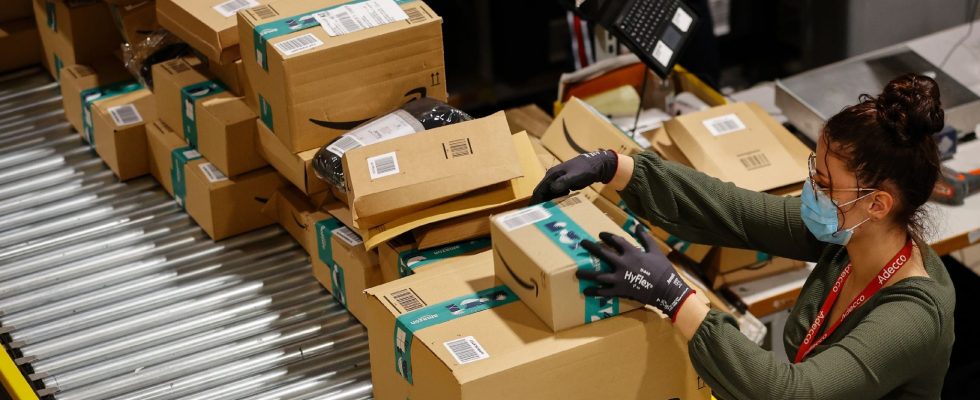At the back of a vast gray warehouse in the German countryside, shelves rise about ten meters. On five levels, cardboard pallets filled with tents, mattresses, blankets… But also cleaning and maintenance products and hygiene kits. On March 13, at its Rheinberg logistics site, Amazon inaugurated its first European center dedicated to helping victims. A device strategically located near the airports of Cologne and Düsseldorf, which should make it possible to send essential packages within 72 hours in the event of disasters in Europe or North Africa.
“The items we stock here are what we have learned from our previous interventions,” explains Bettina Stix, the director of Amazon’s humanitarian response program. Since the American firm with 1.5 million employees worldwide launched into humanitarian work a few years ago, its extraordinary logistics have made it possible to deliver nearly 24 million items, in response to 145 situations. emergency. “At the time of the invasion of Ukraine, we set up two temporary distribution centers, in the Czech Republic and Poland. We saw how important it was to have equipment prepositioned to be able to move very quickly to the “delivery”, explains a manager, who adds: “We are seeking to apply the approach for which we are renowned in retail to humanitarian aid.”
Restoring its green image
A private initiative that NGOs welcome. “The humanitarian needs in the world are such that governments cannot finance everything. It is therefore important to benefit from the support of the commercial sector, in grants or in goods and services,” assures Jeannette Camarillo, director of the International Organization for Migration (IOM), a program dependent on the United Nations.
Everyone has their role nonetheless, we insist at Amazon. “We are doing something completely different from the humanitarian organizations with which we work in partnership. They are on the ground, in direct contact with the victims. Our action remains limited to the supply chain,” explains Bettina Stix. The company calibrates its message and ensures that it only sends necessary products, after consultation with local NGOs: the Red Cross, the IOM, but also Save the Children, which defends children’s rights throughout the world.
The employees of this new German hub should in no case be out of work. Between armed conflicts and extreme weather events, demands continue to increase. Recently, the American giant’s teams have mobilized to help populations in Turkey, in northern Syria, but also in Germany, during the floods which ravaged the villages of the Ahr valley. “We are seeing more and more natural disasters caused by climate change,” emphasizes Bettina Stix. The opportunity for Amazon to restore its green image, damaged by the impact of its activity on global CO2 emissions. With a carbon footprint estimated at 71.27 million tonnes in 2022, down only 0.4% year-on-year, the distributor remains light years away from its “Net Zero” objective posted for 2040.
